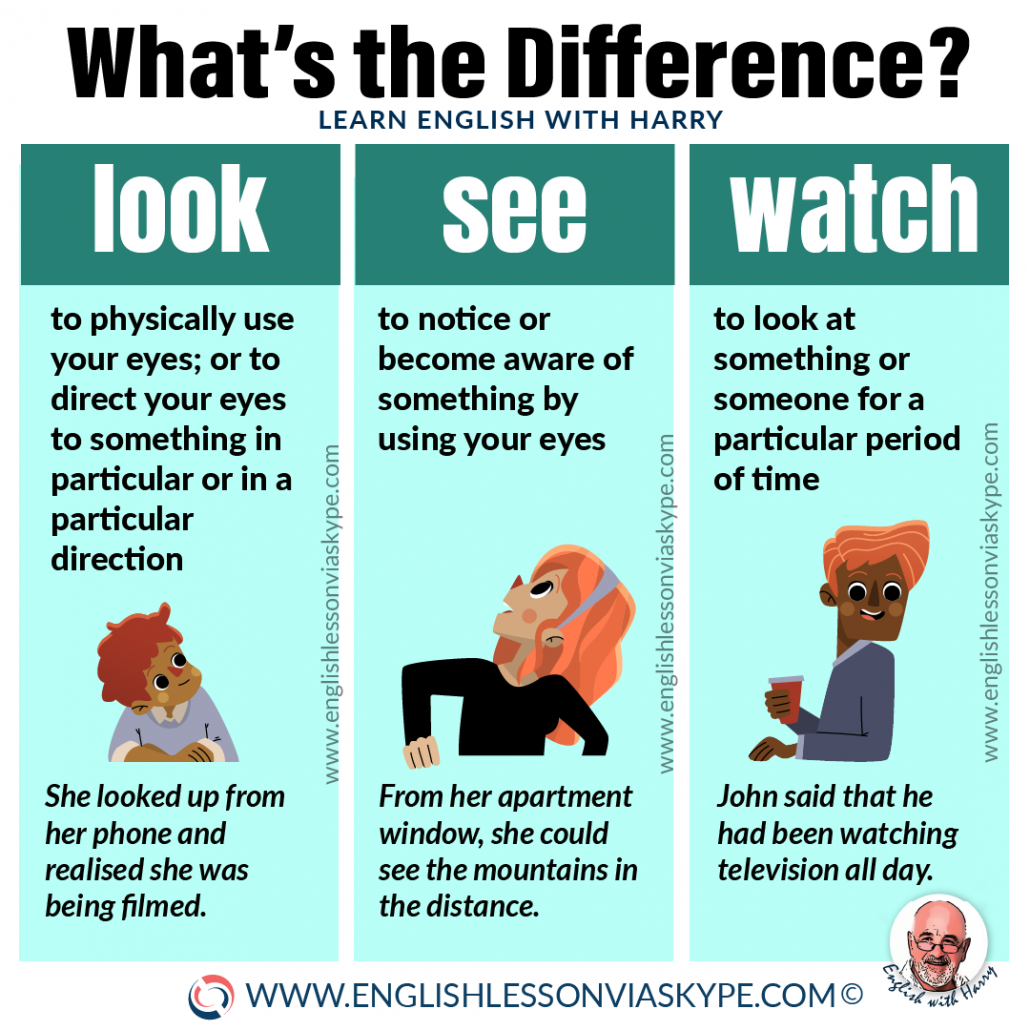Mastering "Look" In Spanish: A Comprehensive Guide
Navigating the intricacies of a new language often means grappling with words that seem simple in your native tongue but hold a multitude of meanings and uses elsewhere. The English word "look" is a prime example. While it might appear straightforward, understanding how to express "look in Spanish" effectively requires delving into a rich tapestry of verbs, nouns, and idiomatic expressions. This guide will meticulously break down the various ways to convey "look" in Spanish, ensuring you can communicate with precision and confidence.
From directing your gaze to searching for something, or even describing someone's appearance, "look" serves many functions. In Spanish, there isn't a single, all-encompassing equivalent. Instead, the context dictates which word or phrase is most appropriate. This article aims to provide a clear, in-depth exploration of these distinctions, drawing on expert linguistic insights to help you master this fundamental aspect of Spanish communication.
Table of Contents
- Understanding the English "Look": More Than Meets the Eye
- Mirar: The Primary Verb for "To Look At"
- Ver: "To See" or "To Look" Passively
- Parecer: "To Look" as "To Seem" or "To Appear"
- Buscar: "To Look For" or "To Search"
- Other Essential Verbs and Phrases for "Look"
- "A Look" as a Noun: Aspectos and Miradas
- Navigating Idiomatic Expressions and Cultural Contexts
- Conclusion: Your Journey to Fluency in "Look in Spanish"
Understanding the English "Look": More Than Meets the Eye
Before we dive into how to say "look in Spanish," it's crucial to fully grasp the multifaceted nature of the English word itself. The term "look" is remarkably versatile, encompassing a range of actions and perceptions. According to various dictionary definitions, the meaning of "look" can be:"To Look" as Directing Your Gaze
This is perhaps the most common understanding: "To direct your eyes in order to see." It implies an active intention to perceive something visually. For instance, "She looked over the expanse of land" or "His look was fixed on her eyes." This usage emphasizes the act of focusing one's vision. It's about where your eyes are pointed and what you are actively trying to observe. The intention behind the gaze is key here."To Look" as Seeking or Searching
Another significant meaning is "To try to find something or someone." When you "look for" something, you are actively engaged in a search. "He went out to have a look" implies a search or investigation. This usage moves beyond mere visual perception to an active quest. It’s not just seeing, but seeking out what isn’t immediately apparent."To Look" as Appearance or Seeming
"Look" can also refer to an "appearance or seeming in general," or "The quality of anything as judged by the eye or the understanding." This often relates to how something appears or seems to be. Examples include "As, I do not like the look of the sky" or "The look of the thing (an action, a proposition)." Here, "look" functions almost as a noun, describing an impression or visual quality. It also extends to "To seem or appear to be," as in "That looks like a good idea." This aspect of "look" is about perception and judgment based on visual cues or overall impression. Understanding these core meanings in English provides a solid foundation for appreciating why Spanish employs different words to convey these distinct nuances of "look."Mirar: The Primary Verb for "To Look At"
When you want to express the act of actively directing your eyes towards something or someone, the verb you'll almost always use to convey "look in Spanish" is mirar. This verb captures the essence of conscious observation, focusing your gaze, or paying attention visually. It's the most direct translation for "to look at" or "to watch."Common Uses and Conjugation of Mirar
Mirar is a regular -ar verb, making its conjugation relatively straightforward. It is used when there is an intentional act of looking. * **To look at/to watch:** This is its most common application. * **To observe:** Often interchangeable with observar, but mirar is more general. * **To stare:** Can be used with an adverb like fijamente (fixedly) to imply staring. Let's look at its present tense conjugation: * Yo miro (I look/watch) * Tú miras (You look/watch) * Él/Ella/Usted mira (He/She/You formal look/watch) * Nosotros/Nosotras miramos (We look/watch) * Vosotros/Vosotras miráis (You all look/watch - informal, Spain) * Ellos/Ellas/Ustedes miran (They/You all look/watch)Examples of Mirar in Context
* Mira la televisión. (He/She looks at/watches television.) * Siempre miramos las estrellas por la noche. (We always look at the stars at night.) * No me mires así. (Don't look at me like that.) * ¿Qué estás mirando? (What are you looking at?) * Miró por la ventana para ver si llovía. (He looked out the window to see if it was raining.) When you want to explicitly state "to look at," mirar is often followed by the preposition "a" when referring to people or personified objects, or directly by the object when referring to things. For example, "Mirar a alguien" (to look at someone) vs. "Mirar un cuadro" (to look at a painting). This is a key verb to master when trying to express "look in Spanish."Ver: "To See" or "To Look" Passively
While mirar implies an active decision to direct one's gaze, ver is generally used for the passive act of "to see" or "to perceive visually." It refers to the ability to see or the accidental act of something coming into view. Think of it as the difference between "looking" (active) and "seeing" (passive).Ver vs. Mirar: A Crucial Distinction
This distinction is fundamental to correctly express "look in Spanish." * **Mirar:** To actively direct your eyes; to pay attention visually. (e.g., "I'm looking at the painting.") * **Ver:** To perceive with your eyes; to have something come into your field of vision, or simply to possess the faculty of sight. (e.g., "I see the painting," or "Can you see me?") Consider these examples: * Miro la televisión. (I am actively watching TV.) * Veo la televisión. (I am seeing the TV, or I have the TV in my line of sight, or I watch TV in general, implying a habit rather than an active moment of looking.) * ¿Miraste el partido anoche? (Did you actively watch the game last night?) * ¿Viste el partido anoche? (Did you see the game last night? – implying whether you caught it, or it was broadcast.) Ver is also used for understanding or comprehending, similar to how "see" is used in English ("I see what you mean").Practical Applications of Ver
* **Ability to see:** ¿Ves bien sin gafas? (Do you see well without glasses?) * **Perceiving something:** Vi un pájaro en el árbol. (I saw a bird in the tree.) * **Meeting someone (often future tense):** Nos veremos mañana. (We'll see each other tomorrow.) * **Understanding:** Veo lo que quieres decir. (I see what you mean.) Conjugation of ver (irregular in present tense 'yo' form): * Yo veo * Tú ves * Él/Ella/Usted ve * Nosotros/Nosotras vemos * Vosotros/Vosotras veis * Ellos/Ellas/Ustedes ven Understanding when to use mirar versus ver is a hallmark of fluency when attempting to express "look in Spanish."Parecer: "To Look" as "To Seem" or "To Appear"
When the English "look" refers to appearance, impression, or how something seems to be, the Spanish verb you need is parecer. This verb is crucial for describing qualities, opinions, or perceptions, often without an active visual engagement from the subject. It aligns perfectly with the English meaning of "to seem or appear to be."Conveying Appearance and Opinion with Parecer
Parecer is frequently used with adjectives or nouns to describe how something or someone looks or appears. It can also be used impersonally to express an opinion. * **Describing appearance:** * Ella parece cansada. (She looks tired.) * La casa parece antigua. (The house looks old.) * Ese vestido te parece bien. (That dress looks good on you.) * **Expressing opinion (often with indirect object pronouns):** * Me parece una buena idea. (It looks like a good idea to me / It seems like a good idea to me.) * ¿Qué te parece? (What do you think? / How does it look to you?) * Nos parece que va a llover. (It looks to us like it's going to rain.)Parecer in Idiomatic Expressions
Parecer is also found in several common idiomatic expressions: * Parecerse a: To look like / to resemble. * Se parece a su padre. (He looks like his father.) * Aparentar is a synonym that also means "to appear" or "to look like," often implying a deceptive appearance. * Aparenta más joven de lo que es. (He looks younger than he is.) Conjugation of parecer (irregular in present tense 'yo' form): * Yo parezco * Tú pareces * Él/Ella/Usted parece * Nosotros/Nosotras parecemos * Vosotros/Vosotras parecéis * Ellos/Ellas/Ustedes parecen When describing how something "looks" in terms of its appearance or impression, parecer is the go-to verb to use for "look in Spanish."Buscar: "To Look For" or "To Search"
When the English "look" implies an active quest or search, the Spanish verb to use is buscar. This verb directly translates to "to look for," "to search for," or "to seek." Unlike mirar, which is about directing your gaze, buscar is about trying to find something that is not immediately visible or present.The Active Quest: Using Buscar
Buscar inherently includes the idea of "for," so you do not need an additional preposition like "por" or "para" after it when it means "to look for." This is a common mistake for English speakers learning to express "look in Spanish." * **To look for something/someone:** * Estoy buscando mis llaves. (I am looking for my keys.) * ¿Qué buscas? (What are you looking for?) * **To search:** * La policía está buscando al ladrón. (The police are searching for the thief.) * **To fetch/pick up:** In some contexts, it can imply going to get something. * Voy a buscar a los niños al colegio. (I'm going to pick up the children from school.)Buscar in Everyday Scenarios
* **Online searches:** * Necesito buscar información en internet. (I need to look for information online.) * **Job hunting:** * Está buscando un nuevo empleo. (He is looking for a new job.) * **Problem-solving:** * Estamos buscando una solución al problema. (We are looking for a solution to the problem.) Conjugation of buscar (regular -ar verb): * Yo busco * Tú buscas * Él/Ella/Usted busca * Nosotros/Nosotras buscamos * Vosotros/Vosotras buscáis * Ellos/Ellas/Ustedes buscan Remember, if you're actively trying to locate something or someone, buscar is the definitive verb for "look in Spanish."Other Essential Verbs and Phrases for "Look"
Beyond the core verbs mirar, ver, parecer, and buscar, Spanish offers a variety of other verbs and expressions to convey more specific nuances of "look." These are vital for adding precision and richness to your communication.Otear and Echar un Vistazo: Quick Looks
* **Otear:** This verb implies a quick, often distant, or furtive look, especially from a high vantage point, to scan or survey. * El capitán oteaba el horizonte en busca de tierra. (The captain was scanning the horizon looking for land.) * **Echar un vistazo (or echar una ojeada):** This is a very common phrase meaning "to take a quick look," "to glance," or "to have a look." It's informal and highly versatile. * Voy a echar un vistazo a los documentos. (I'm going to take a quick look at the documents.) * ¿Puedes echarle un vistazo a mi coche? (Can you have a look at my car?) This is very similar to the English phrase "He went out to have a look."Exploring More Nuances: Observar, Contemplar, Examinar
These verbs provide more specific ways to express "look" depending on the intensity and purpose of the gaze: * **Observar:** To observe, to watch carefully. This implies a more sustained and analytical gaze than mirar. * Los científicos observaron el comportamiento de los animales. (The scientists observed the animals' behavior.) * **Contemplar:** To contemplate, to gaze at thoughtfully, to behold. This suggests a prolonged, often admiring or reflective look. * Se sentó a contemplar el atardecer. (He sat down to contemplate the sunset.) * **Examinar:** To examine, to inspect closely. This implies a detailed, investigative look. * El médico examinó al paciente. (The doctor examined the patient.) * **Asomarse:** To look out, to lean out (from a window, balcony, etc.). * Se asomó a la ventana para ver qué pasaba. (He looked out the window to see what was happening.) These additional verbs demonstrate the richness of Spanish vocabulary when it comes to expressing the various shades of "look in Spanish." Choosing the right one can significantly enhance the precision of your communication.
Phrasal Verbs with Look | Flashcards

Cấu Trúc và Cách dùng LOOK trong Tiếng Anh - v1000

Collection 96+ Pictures Pictures You Have To Look At To Understand Updated